SAMAR ISLAND GUIDE: EXPLORER JONI A. BONIFACIO TEL: 055-2512301
CELL:09192943865 / 09053233572
WEBSITE: www.bonifaciojoni.blogspot.com
DISCOVER ZUMARRAGA,SAMAR
TOURISM INVENTORY
JULY 11-13,2006
TEAM:
1. JONI A. BONIFACIO TREXPLORE/TEAM LEADER
2. SHERWIN S. ORBETA TREXPLORE/EXPLORER
3. BELINDA MORILLO TREXPLORE/DOCUMENTOR
4. NELSON LABRAGUE TREXPLORE/EXPLORER
COORDINATOR:
ENG.EDGAR C. VERSOZA
GUIDES:
1. EDILBERTO VERZOSA GUIDE/LEADER
2. RONALD YONDAYAN LOCAL GUIDE
3. JUNIER ORAYA LOCAL GUIDE
4. DANILLO ALDIANO BOAT OPERATOR
SPOTS:
1. ARTECHE PARK
2. ST. ANTHONY DE PADUA CHURCH
3. OLD MUNICIPAL BUILDING
4. SANTA BARBARA RUINS
5. BANGON FALLS 1 & 2
6. LULUGAYAN FALLS 1 & 2
7. LULUGAYAN NATURAL POOL
8. BUHO BRACH
9. CAMP PONDOY (HIGHEST PEAK IN ZUMARRAGA)
10. MT. TINOY-AN
HISTORY:
Zumarraga, Buad Island
The present-day town Zumarraga in Buad Island was called Buad in earlier days. Before 1768, The Jesuits had established a visita on the island of Buad southwest of Catbalogan. In 1845, The Franciscan Fray Martín de Yepes built a church of wood planks.
On 13 March 1863, Buad was created as a new town and given a new name, Zumarraga, then on 12 October 1865, Buad parish was created by separating it from Catbalogan in accordance with a decree of 13 March 1863.
Heritage sites: The Jesuits built a fort in Buad but apparently did not leave any stone church in Buad. Status of this fort needs to be confirmed.












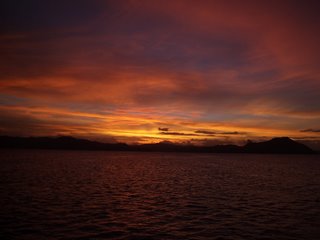






















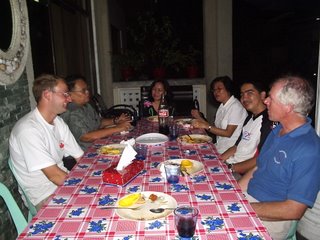





















































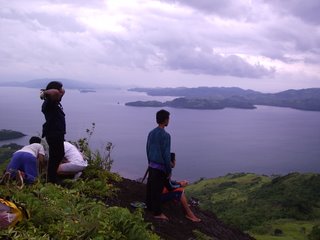






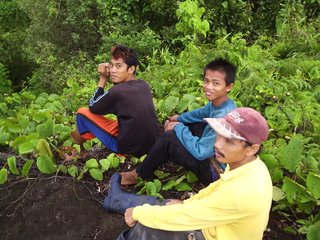







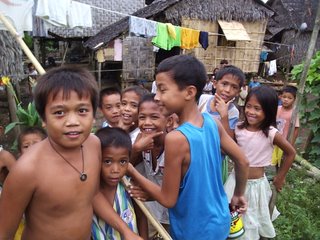

















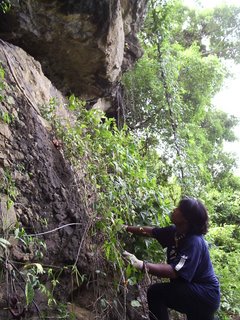






















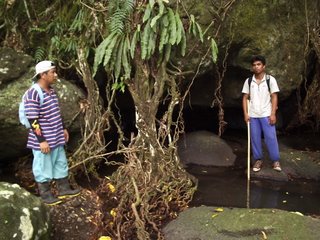














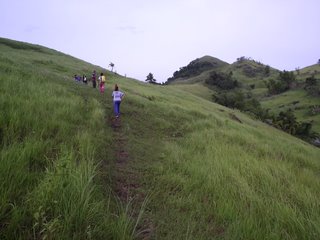














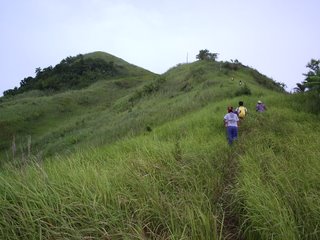




























































































































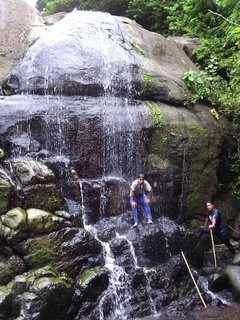




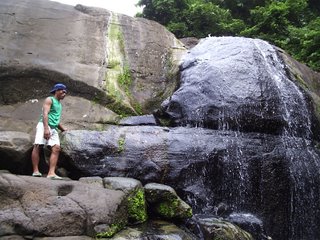






























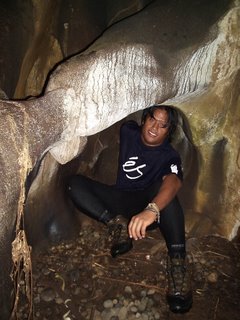












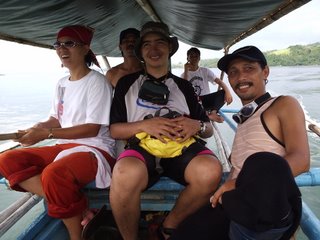

















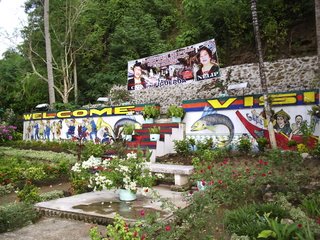































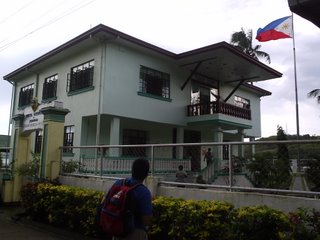


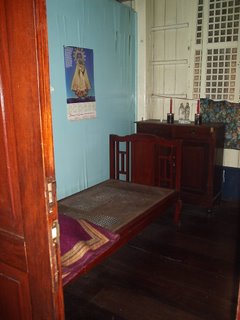






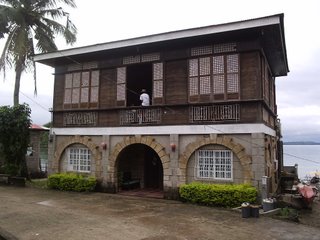

















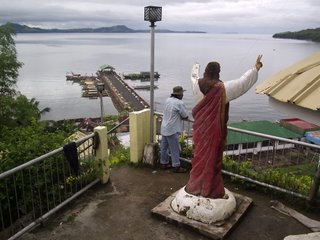





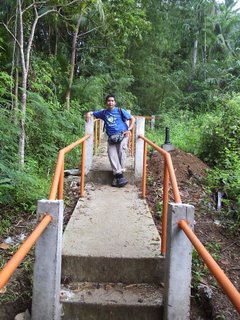
















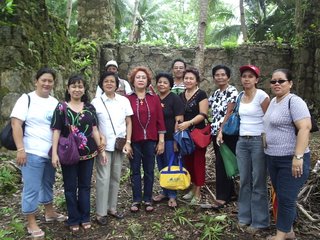















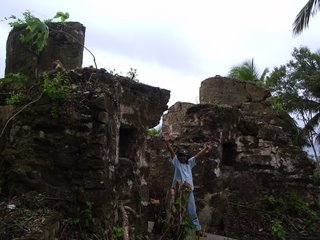

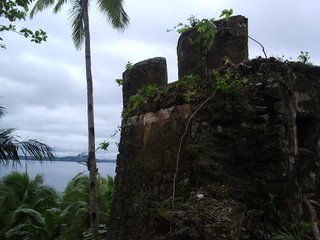






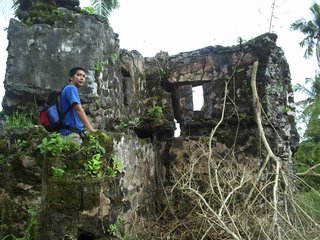














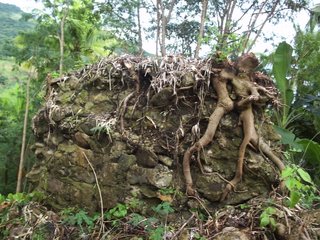











































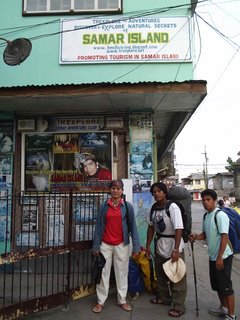

ZUMARRAGA AWAITING
BY PET S. LABRO Ph. D.
Somewhere I’ve never traveled,
Gladly beyond any experience.
-e. e. Cummings
Majestically afloat amid emerald waters, the island of Zumarraga eternally basks under the glorious sun as its balmy trees mirthfully cadence in unison with the laughter of amorous waves that abound Maqueda Bay. The island has always been and will remain serene. The tidy up Arteche Park, the hypnotic allure of Poro, the formidable Granite watch of Lumban, and placid waters of Canwarak Bay are warm vignettes which soothe weary hearts.
But the island, as historian claim, was born of tumultuous ruptures cause by earthquakes in volcanic underwater beds creating considerable pressure pushing molten lava upwards and, when millions moons have waned, giving existence to a land knass. The island started as part of these large piece of land, severing itself later to define it’s owned geophysical boundaries. Some believes its existence predates and even spawns the habitation of the of the capital town of Catbalogan, yet during colonial Philippines, Zumarraga was only a visita of Catbalogan until 1863 when it was made a separate pueblo and parish on March 13, 1863 the permission was rescinded because of the insufficient numbers of Franciscan parish priest.
The island prehistoric civilization and trading activities were establish by artifacts and fossils born from archaeological explorations in 1969. Anthropologist Daniel Scheans, Roger Cherry, and Karl Hulterer. discovered a primitive blade tool industry in their open site excavations on the islands. The recovered materials consisted of small blade and flake tools, cores, and debit age which they classified as knives with and without backing scrapers of the end side, notched varieties, borers single multiple blow burins, gravers and samtik, a tool use as part of flint and steel strike a light. These anthropological harvest give rise to what is referred to as buadian blade tool industry.
According to old timers, the ancient name “Buad” the local term for digging, was derived from binuwaran or large burrows ominously left ferocious beasts along the shores of the island. Apparently unaware of the significance of the old name, residents changed it to Zumarraga to honor its first parish priest, the Spaniard fray martin de yepes it is he himself changed the Buad into Zumarraga reason; homesickness, who came from Zumarraga Spain.
Tales have it that the early settlers of the island where sturdy and a season fisher folks who possessed considerable strength and endurance. They depended largely on the island’s agriculture and aquatic resource, and persevered during difficult and interesting times as evidenced by ancient fortification against moro raids, such as Campanario and the old settlement of Sta, Barbara Zumarraga population increased with the arrival of émigrés from neighboring pueblos and Sitio, Leyte immigrants included the Astorgas and De Guias FROM Barugo, the Zetas from palo and the Villaflors from Carigara from Catbalogan came the Dazas, Pedrazas, Magas and Narios while other clans trace their roots to migrants Lozanos, Carcellars, Castillos, Losas, Versozas, Salenteses and Sozas of neighboring islands.
Under the celestial patronage of St, Anthony of Padua and the increasing efforts of local leaders, the town eventually grew and prospered. Archival records of reveal the town official were appointed by the gobernadorcillo and anointed by the parish priest. In colonial Philippines under the Spanish governor-generals,Zumarraga’s Capitanes included Tenorio Ferrer (Capitan Toyang), Nepomucino Zeta (Capitan Simoy), Nicolas Costudio (Capitan Colas), Salvador Zeta(Capitan Badong), Brigido Real (Capitan Bido),Tomas Bello, Hilario Villaflor and Agustin Astorga. Under the American neocolonial administration, the Presidentes were Mariano Maga(1910),Luis Villaflor(1911), Lucio Mijares(1913),Leodegario Carcillar(1914),Enrique Nario(1916 and 1926),Benito Astorga(1920),Rodrigo Daza(1931) and Emelio Zeta(1936), Francisco Zosa served as mayor during the Japanese occupation. Post WW II local executives were Canuto Lim, Sr (1947) Dominador Bolok (1951),Francisco Castillo (1958), Francisco Amuyo (1964), Primo Nario (1968), Canuto Lim Jr (1972 and 1986),Bibiano Letaba(1979),Romulo Dosal (1994) and Casilda Lim(1996),
A few remember Zumarraga as a “boom town” before and shortly after the second world war. The nearby waters were teeming with schools of fishes as a number of sapyaos and bunoans abound bringing enormous rewards to the fisher folks. As a center of civil governance and commerce, Zumarraga enjoyed the presence of ample trading and labor opportunities. Enterprising ken heartily competed to hire exceptional labor and absorb the daily catch of sustenance fishermen. The produce of municipality was distribute to a biggest market which included Calbayog, Catbalogan, Tacloban, Zumaraganhon was able to sent their children to a better schools elsewhere because of these seeming prosperity. The island was in no better economic and political shape at any other given time until treats to its potential began to storm.
With the political independence of Daram island in the late 50s and the opening of Maharlika highways during the 70s, economic activities has began dwiadle. The migration of families and the discontinuance of the ferry service had adverse effect on the political, cultural, social, economic and technological development of the people of the island municipality. The decrease of the political domain, depletion of the marine resources, and absence of economic opportunities and viable market for produce likewise result in the gradual out -migration of young and ambitious Zumarraganhons who felt that their bright future awaited them somewhere else.
Nowadays, quite feels the break of evenings, and serenity goes undisturbed all through the day. Unlike any other, the market place devoid of commerce silently squats along the periphery of the newly renovated Precidencia trying to capture in solitude the din of its past glory. The massive stone arch of the commonwealth period still stands along the main street to welcome accidental tourist to a museum town of pleasant memories and pistic relies as islanders taking respite from boredom meticulously watch on sidebars to discern from visitors the uncanny resemblance of absentee kin. While most of Zumarraga’s exiled sons and daughters have achieved success and recognition, few of them return to share the bounty of their harvest which could significantly uplift the quality of life of marginalized Zumarraganhons. An extended roof may have covered the plaza, or lamp posts may have illumed early evenings, or a couple of deep wells may have been dug deep into the bowels of the arid land, but true development has yet to see light on the island that nurtured dreams. Until opportunities for massive growth and holistic development knock at your doorsteps of sustenance islanders, life on the balmy isle will remain in a languid fashion, undisturbed and wistful, timidly deprived and unexplored.
CELL:09192943865 / 09053233572
WEBSITE: www.bonifaciojoni.blogspot.com
DISCOVER ZUMARRAGA,SAMAR
TOURISM INVENTORY
JULY 11-13,2006
TEAM:
1. JONI A. BONIFACIO TREXPLORE/TEAM LEADER
2. SHERWIN S. ORBETA TREXPLORE/EXPLORER
3. BELINDA MORILLO TREXPLORE/DOCUMENTOR
4. NELSON LABRAGUE TREXPLORE/EXPLORER
COORDINATOR:
ENG.EDGAR C. VERSOZA
GUIDES:
1. EDILBERTO VERZOSA GUIDE/LEADER
2. RONALD YONDAYAN LOCAL GUIDE
3. JUNIER ORAYA LOCAL GUIDE
4. DANILLO ALDIANO BOAT OPERATOR
SPOTS:
1. ARTECHE PARK
2. ST. ANTHONY DE PADUA CHURCH
3. OLD MUNICIPAL BUILDING
4. SANTA BARBARA RUINS
5. BANGON FALLS 1 & 2
6. LULUGAYAN FALLS 1 & 2
7. LULUGAYAN NATURAL POOL
8. BUHO BRACH
9. CAMP PONDOY (HIGHEST PEAK IN ZUMARRAGA)
10. MT. TINOY-AN
HISTORY:
Zumarraga, Buad Island
The present-day town Zumarraga in Buad Island was called Buad in earlier days. Before 1768, The Jesuits had established a visita on the island of Buad southwest of Catbalogan. In 1845, The Franciscan Fray Martín de Yepes built a church of wood planks.
On 13 March 1863, Buad was created as a new town and given a new name, Zumarraga, then on 12 October 1865, Buad parish was created by separating it from Catbalogan in accordance with a decree of 13 March 1863.
Heritage sites: The Jesuits built a fort in Buad but apparently did not leave any stone church in Buad. Status of this fort needs to be confirmed.
























































































































































































































































































































































































































































































































































ZUMARRAGA AWAITING
BY PET S. LABRO Ph. D.
Somewhere I’ve never traveled,
Gladly beyond any experience.
-e. e. Cummings
Majestically afloat amid emerald waters, the island of Zumarraga eternally basks under the glorious sun as its balmy trees mirthfully cadence in unison with the laughter of amorous waves that abound Maqueda Bay. The island has always been and will remain serene. The tidy up Arteche Park, the hypnotic allure of Poro, the formidable Granite watch of Lumban, and placid waters of Canwarak Bay are warm vignettes which soothe weary hearts.
But the island, as historian claim, was born of tumultuous ruptures cause by earthquakes in volcanic underwater beds creating considerable pressure pushing molten lava upwards and, when millions moons have waned, giving existence to a land knass. The island started as part of these large piece of land, severing itself later to define it’s owned geophysical boundaries. Some believes its existence predates and even spawns the habitation of the of the capital town of Catbalogan, yet during colonial Philippines, Zumarraga was only a visita of Catbalogan until 1863 when it was made a separate pueblo and parish on March 13, 1863 the permission was rescinded because of the insufficient numbers of Franciscan parish priest.
The island prehistoric civilization and trading activities were establish by artifacts and fossils born from archaeological explorations in 1969. Anthropologist Daniel Scheans, Roger Cherry, and Karl Hulterer. discovered a primitive blade tool industry in their open site excavations on the islands. The recovered materials consisted of small blade and flake tools, cores, and debit age which they classified as knives with and without backing scrapers of the end side, notched varieties, borers single multiple blow burins, gravers and samtik, a tool use as part of flint and steel strike a light. These anthropological harvest give rise to what is referred to as buadian blade tool industry.
According to old timers, the ancient name “Buad” the local term for digging, was derived from binuwaran or large burrows ominously left ferocious beasts along the shores of the island. Apparently unaware of the significance of the old name, residents changed it to Zumarraga to honor its first parish priest, the Spaniard fray martin de yepes it is he himself changed the Buad into Zumarraga reason; homesickness, who came from Zumarraga Spain.
Tales have it that the early settlers of the island where sturdy and a season fisher folks who possessed considerable strength and endurance. They depended largely on the island’s agriculture and aquatic resource, and persevered during difficult and interesting times as evidenced by ancient fortification against moro raids, such as Campanario and the old settlement of Sta, Barbara Zumarraga population increased with the arrival of émigrés from neighboring pueblos and Sitio, Leyte immigrants included the Astorgas and De Guias FROM Barugo, the Zetas from palo and the Villaflors from Carigara from Catbalogan came the Dazas, Pedrazas, Magas and Narios while other clans trace their roots to migrants Lozanos, Carcellars, Castillos, Losas, Versozas, Salenteses and Sozas of neighboring islands.
Under the celestial patronage of St, Anthony of Padua and the increasing efforts of local leaders, the town eventually grew and prospered. Archival records of reveal the town official were appointed by the gobernadorcillo and anointed by the parish priest. In colonial Philippines under the Spanish governor-generals,Zumarraga’s Capitanes included Tenorio Ferrer (Capitan Toyang), Nepomucino Zeta (Capitan Simoy), Nicolas Costudio (Capitan Colas), Salvador Zeta(Capitan Badong), Brigido Real (Capitan Bido),Tomas Bello, Hilario Villaflor and Agustin Astorga. Under the American neocolonial administration, the Presidentes were Mariano Maga(1910),Luis Villaflor(1911), Lucio Mijares(1913),Leodegario Carcillar(1914),Enrique Nario(1916 and 1926),Benito Astorga(1920),Rodrigo Daza(1931) and Emelio Zeta(1936), Francisco Zosa served as mayor during the Japanese occupation. Post WW II local executives were Canuto Lim, Sr (1947) Dominador Bolok (1951),Francisco Castillo (1958), Francisco Amuyo (1964), Primo Nario (1968), Canuto Lim Jr (1972 and 1986),Bibiano Letaba(1979),Romulo Dosal (1994) and Casilda Lim(1996),
A few remember Zumarraga as a “boom town” before and shortly after the second world war. The nearby waters were teeming with schools of fishes as a number of sapyaos and bunoans abound bringing enormous rewards to the fisher folks. As a center of civil governance and commerce, Zumarraga enjoyed the presence of ample trading and labor opportunities. Enterprising ken heartily competed to hire exceptional labor and absorb the daily catch of sustenance fishermen. The produce of municipality was distribute to a biggest market which included Calbayog, Catbalogan, Tacloban, Zumaraganhon was able to sent their children to a better schools elsewhere because of these seeming prosperity. The island was in no better economic and political shape at any other given time until treats to its potential began to storm.
With the political independence of Daram island in the late 50s and the opening of Maharlika highways during the 70s, economic activities has began dwiadle. The migration of families and the discontinuance of the ferry service had adverse effect on the political, cultural, social, economic and technological development of the people of the island municipality. The decrease of the political domain, depletion of the marine resources, and absence of economic opportunities and viable market for produce likewise result in the gradual out -migration of young and ambitious Zumarraganhons who felt that their bright future awaited them somewhere else.
Nowadays, quite feels the break of evenings, and serenity goes undisturbed all through the day. Unlike any other, the market place devoid of commerce silently squats along the periphery of the newly renovated Precidencia trying to capture in solitude the din of its past glory. The massive stone arch of the commonwealth period still stands along the main street to welcome accidental tourist to a museum town of pleasant memories and pistic relies as islanders taking respite from boredom meticulously watch on sidebars to discern from visitors the uncanny resemblance of absentee kin. While most of Zumarraga’s exiled sons and daughters have achieved success and recognition, few of them return to share the bounty of their harvest which could significantly uplift the quality of life of marginalized Zumarraganhons. An extended roof may have covered the plaza, or lamp posts may have illumed early evenings, or a couple of deep wells may have been dug deep into the bowels of the arid land, but true development has yet to see light on the island that nurtured dreams. Until opportunities for massive growth and holistic development knock at your doorsteps of sustenance islanders, life on the balmy isle will remain in a languid fashion, undisturbed and wistful, timidly deprived and unexplored.
